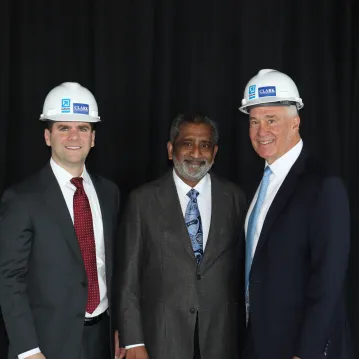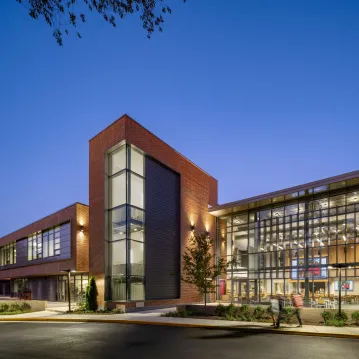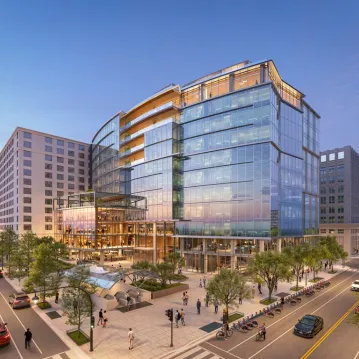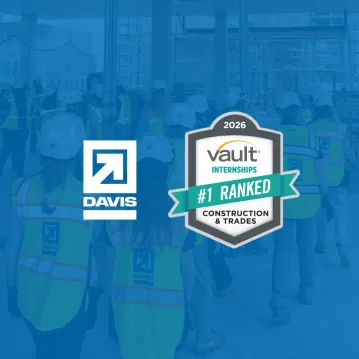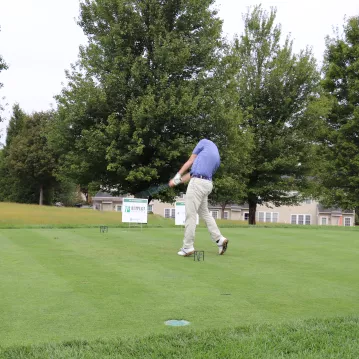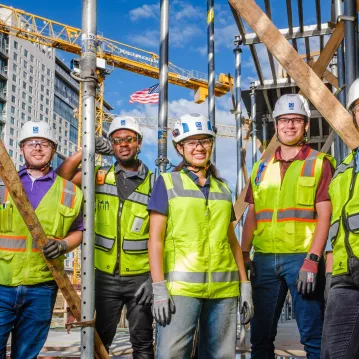Innovator Spotlight - Jason Haislip
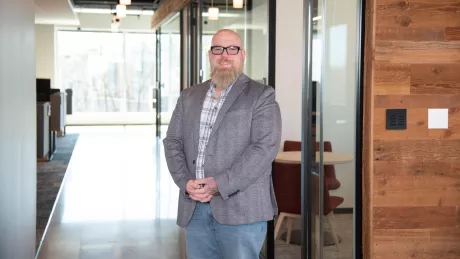
At DAVIS, we’re constantly looking for ways to stay ahead of the curve. This industry is always evolving, and the only way to succeed is to innovate. This year, we’re featuring people at DAVIS who help us continue to break new ground—in more ways than one.
As Preconstruction Manager, Jason Haislip identifies resources, develops work plans, and helps our projects get off the ground successfully. Read below to learn more about Jason and the incredible work he does at DAVIS!
Jason, you’ve only been at DAVIS for a short time. What drew you to this role?
I’ve done many jobs for DAVIS before working here, and they all went well! I also saw the chance to hone skills I have and learn on the job, too—in this role, I’m getting experience working with Divisions 8-17 I didn’t have before. Also, I’ve always heard about what a great place to work DAVIS was—so a combination of things.
Can you take us through your career path on the way to this role?
Earlier, I mostly worked in concrete and masonry estimating. Eventually I worked with a company called Structural Technologies performing strengthening and repair scopes of work, and I got some great experience with them doing churches, high-rises, nuclear power plants—I mean, everything! If the building was 30 to 50 years old, we were on it. Between doing concrete and masonry repair and becoming certified in post-tensioning repair, I had collected some great tools for historical restoration. I currently serve on two committees for PTI (Post Tensioning Institute); PT-Repair, Rehabilitation and Strengthening Personnel Certification and Repair, Rehabilitation & Strengthening. Then, I got to start working with the DAVIS team, and the rest is history—I’m now a Preconstruction Manager.
How has the adjustment been in the new role?
Coming into a new role can be really intimidating, but it’s been great. I was very clear with explaining to management what I knew and what I didn’t—I didn’t want to oversell myself—and the the team assured me it would be a good fit. And that’s been true! I’ve had a great amount of support learning the DAVIS spreadsheets and systems, and I’ve gotten a lot of on-the-job training to get me up to speed.
Can you tell us about what a typical day looks like for you right now?
I usually have a few meeting with the current clients each week that I'm supporting and keep up with anyone I’m working with to make sure they're aware of upcoming deadlines. Our team’s culture is focused on learning and teaching, so I try to help the people around me the same way I was helped when I started. If I hear someone say they don't know how to do something, I offer to help them out. I try to focus on helping someone every day.
What motivates you to do your best work?
There's a saying that quality protects our jobs and safety protects our lives. Early on, I actually experienced two building collapses, and propelled me to emphasize quality and keeping people safer while working. I think about safety when building jobs in my head and putting the estimates together. There’s so much that can go wrong in this industry, and we have to keep safety at the top of our minds.
Can you tell us about a project that you are particularly proud of and why?
Hmm – the K Bridge (Kosciusko Bridge) in New York was a complex one. They didn’t want it replaced, so we disassembled the bridge, trucked it into PA, and we created this machine that combined a Diablo metallizer, wire feed welders, a plasma gun and an air compressor on a robot carriage! We then would blow molten metal like it was spray paint. After literally coating the steel beams with additional steel to thicken them up, then we shipped it back to Brooklyn. We even hired an IT guy to make the three parts of the machine talk to each other to give us an even coat of new metal.
I need to know what working on a power plant is like.
You have to take 15 online and in-person classes before you can even go inside—you need to know gamma rays from alpha rays, and all the basics of how a plant is run. Also, you can’t drop a tool—one drop and you’re off the job for seven days, and if it happens again, you’re kicked off permanently.
You have an affinity for unique adaptive-reuse projects. What makes you so interested in them?
It takes a certain talent that a lot of people aren’t interested in, and I love the challenge. I love the research and digging into the details and figuring out how to help the client modernize their structure.
We’ve seen all kinds of challenges in the last couple of years. What's been a big takeaway for you?
The biggest takeaway is that great communication is crucial. I was caught up in the supply chain disruption when our steel prices doubled overnight, and I had just signed a $13 million contract with a client. Luckily, we were able to use their insurance to deem it all force majeure and get paid for the increase. Having those tough conversations early and communicating with the client helped build trust, and it made everything go more smoothly.
Are there any trends in technology or real estate that you've been paying attention to?
I think the 3D concrete printing of homes is going to take off. A lot of it is being developed overseas, and once they perfect that, I can see it coming to the US. It’s something contractors definitely need to be paying attention to!
